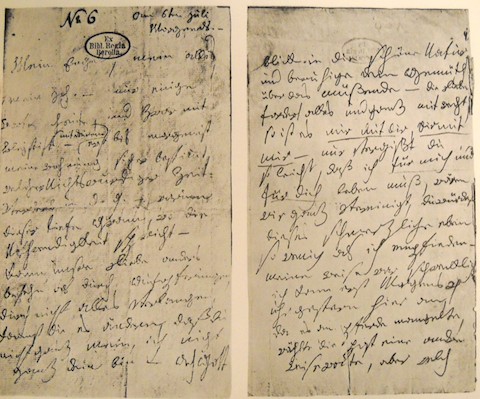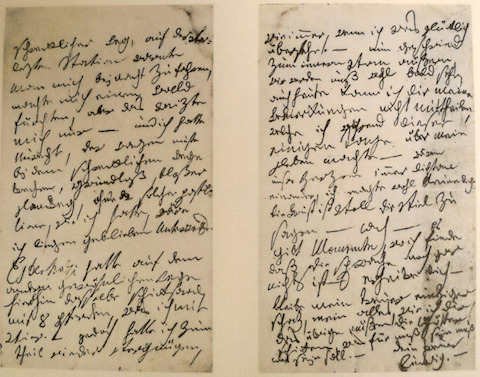
If you’ve ever seen the 1994 feature film where Gary Oldman plays Ludwig van Beethoven, you know the significance of the words “Immortal Beloved” from which it takes its title. But have you seen the actual artifact that inspired it? “Around 1812 Beethoven wrote a long letter (10 pages) to a woman who he was obviously quite taken with,” says the blog LvB and More. “Sadly we will never know for certain who it was. However the letter itself was discovered after Beethoven’s death in a secret drawer where he also kept the Heiligenstadt Testament, some savings and some pictures.” There you can find images of the letter in question (the first two pages appear above, the second two below) and a translation from LVBeethoven.com, faithful right down to the composer’s line breaks, which begins as follows:
July 6
In the morning-My angel, my all
my self — only a few
words today, and indeed with pencil
(with yours)
only tomorrow is my lodging positively fixed
what a worthless waste
of time on such — why
this deep grief, where
necessity speaks -
can our love exist but
by sacrifices
by not demanding everything
can you change it, that you
not completely mine. I am not
completely yours — Oh God

Despite the best efforts of Beethoven’s biographers (and of the widely disputed theory on which the aforementioned movie operates), ignorant we remain of the identity of the Immortal Beloved to whom Beethoven addressed such words of passion. Still, don’t let that stop you from drawing your own conclusions, such as you can from examination of the pages themselves, also available for perusal at Fu$k Yeah Manuscripts. You may remember them from our post on the drawings Dostoyevsky did as he wrote his novels, and from there you can draw the correct conclusion that the site offers a deep well of intriguing works in progress, pieces of correspondence, cris de coeur, and various combinations thereof.
Related Content:
Slavoj Žižek Examines the Perverse Ideology of Beethoven’s Ode to Joy
Beethoven’s Ode to Joy Played With 167 Theremins Placed Inside Matryoshka Dolls in Japan
James Joyce’s “Dirty Letters” to His Wife (1909)
Colin Marshall hosts and produces Notebook on Cities and Culture and writes essays on cities, Asia, film, literature, and aesthetics. He’s at work on a book about Los Angeles, A Los Angeles Primer. Follow him on Twitter at @colinmarshall or on his brand new Facebook page.


Leave a Reply